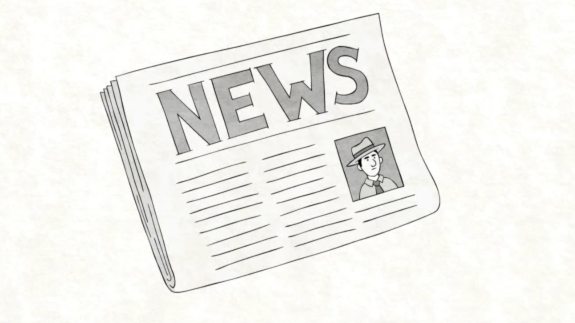How to tell fake news from real news
By Laura McClure on January 12, 2017 in Interviews

In November 2016, Stanford University researchers made an alarming discovery: across the US, many students can’t tell the difference between a reported news article, a persuasive opinion piece, and a corporate ad. This lack of media literacy makes young people vulnerable to getting duped by “fake news” — which can have real consequences.
Want to strengthen your own ability to tell real news from fake news? Start by asking these five questions of any news item:
Who wrote it? Real news contains the real byline of a real journalist dedicated to the truth. Fake news (including “sponsored content” and traditional corporate ads) does not. Once you find the byline, look at the writer’s bio. This can help you identify whether the item you’re reading is a reported news article (written by a journalist with the intent to inform), a persuasive opinion piece (written by an industry expert with a point of view), or something else entirely.
What claims does it make? Real news — like these Pulitzer Prize winning articles — will include multiple primary sources when discussing a controversial claim. Fake news may include fake sources, false urls, and/or “alternative facts” that can be disproven through further research. When in doubt, dig deeper. Facts can be verified.
When was it published? Look at the publication date. If it’s breaking news, be extra careful. Use this tipsheet to decode breaking news.
Where was it published? Real news is published by trustworthy media outlets with a strong factchecking record, such as the BBC, NPR, ProPublica, Mother Jones, and Wired. (To learn more about any media outlet, look at their About page and examine their published body of work.) If you get your news primarily via social media, try to verify that the information is accurate before you share it. (On Twitter, for example, you might look for the blue “verified” checkmark next to a media outlet name to doublecheck a publication source before sharing a link.)
How does it make you feel? Fake news, like all propaganda, is designed to make you feel strong emotions. So if you read a news item that makes you feel super angry, pause and take a deep breath. Then, doublecheck the item’s claims by comparing it to the news on any three of the media outlets listed above — and decide for yourself if the item is real news or fake news. Bottom line: Don’t believe everything you read. There is no substitute for critical thinking.
If you get in the habit of asking all 5 of these questions whenever you read a news article, then your basic news literacy skills will start to grow stronger. However, these are just the basics! To dive deeper into news and media literacy, watch the TED-Ed Lesson: How to choose your news. To find out more about what students need, read the Stanford University report, published here.
Laura McClure is an award-winning journalist and the TED-Ed Editor. To learn something new every week, sign up here for the TED-Ed Newsletter.
Tags: Media & Journalism, News, Politics